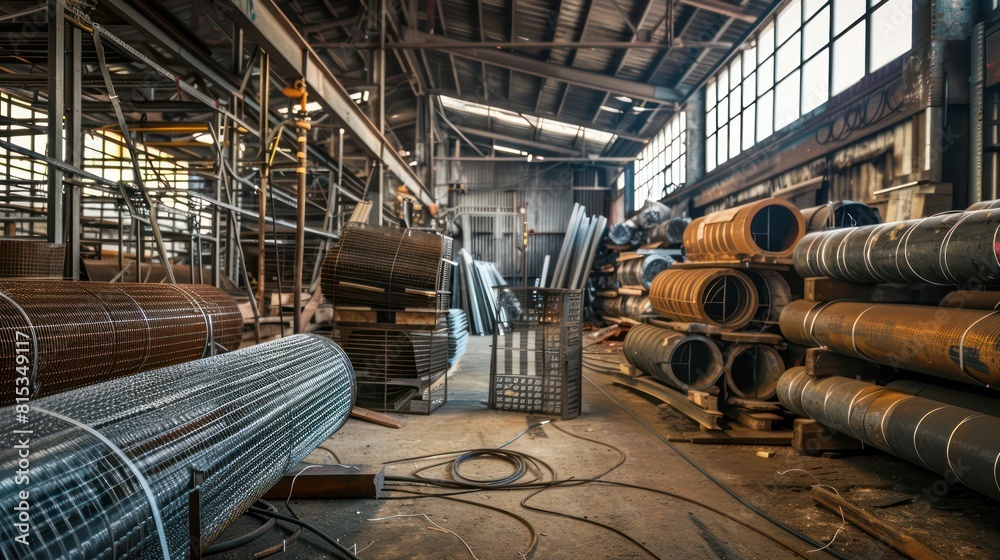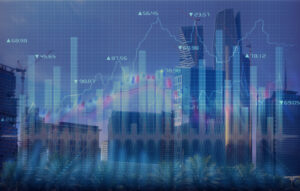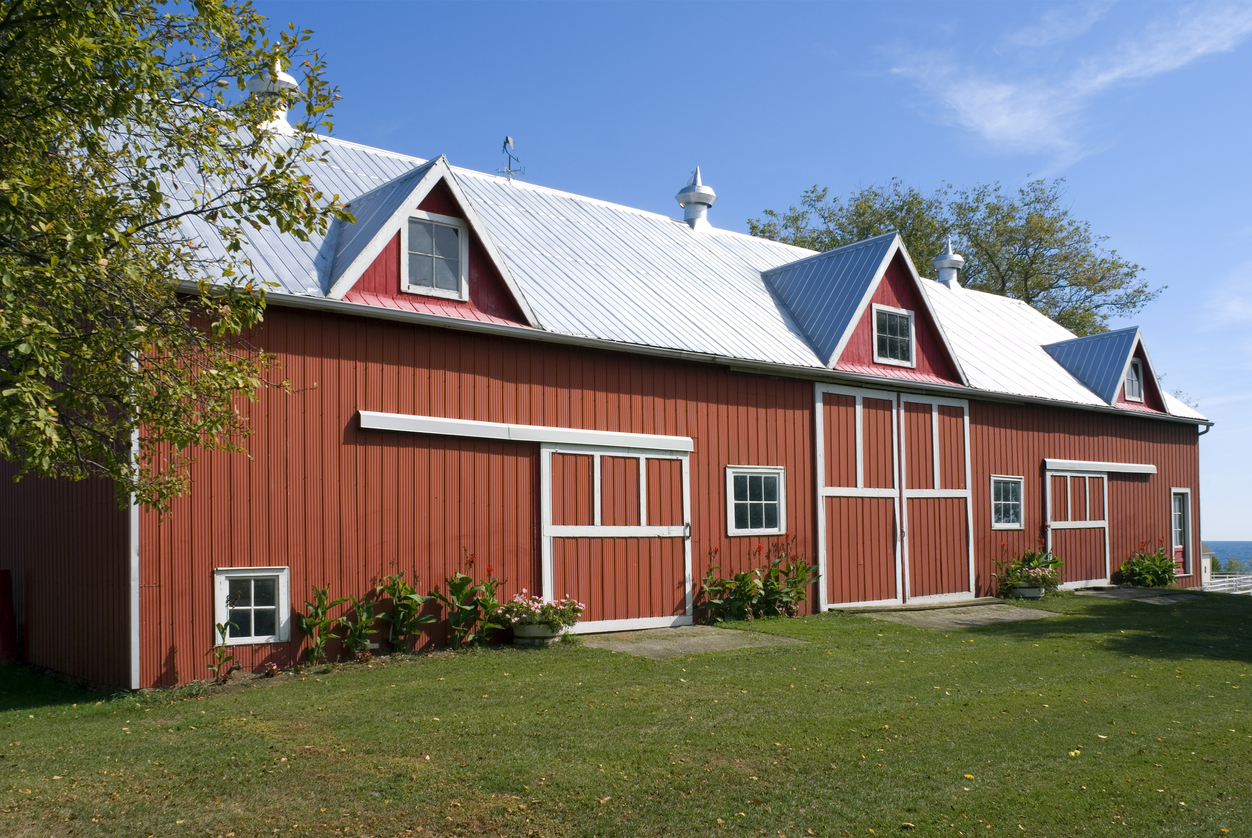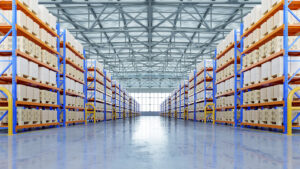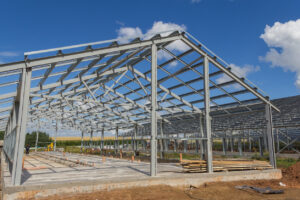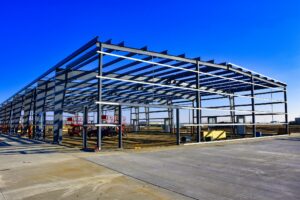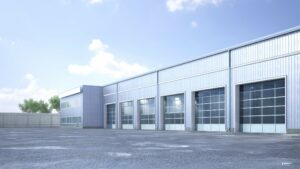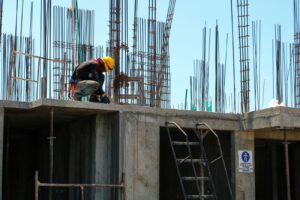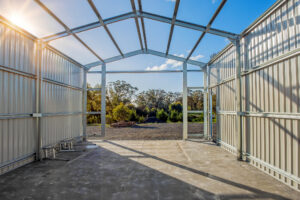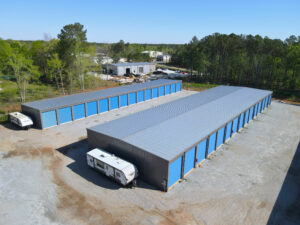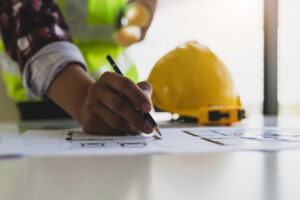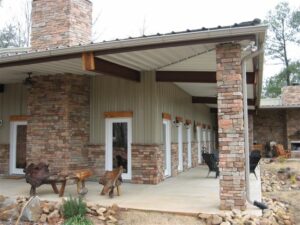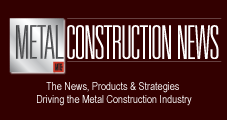Industrial buildings play a crucial role in our modern society, serving as the backbone of numerous industries. From factories to warehouses, power plants to distribution centers, these industrial buildings types and their maintenance are essential for manufacturing, storage, and production processes.
As of 2022, about 11.1 billion of the 14.8 billion square feet of industrial real estate were warehouses and distribution facilities. (Statista)
In this article, we will delve into the different aspects of industrial buildings, their classification, design and construction, maintenance and safety practices, and future trends in their development.
Table of Contents:
- Understanding Industrial Buildings
- Classification of Industrial Buildings
- Design and Construction of Industrial Buildings
- Maintenance and Safety in Industrial Buildings
- Future Trends in Industrial Building Design
- Conclusion
- Frequently Asked Questions
Understanding Industrial Buildings
Industrial buildings encompass diverse types of structures that are specifically designed to cater to industrial activities. These buildings are purpose-built and strategically planned to meet the unique requirements of different industries.
They provide the necessary infrastructure, equipment, and facilities for manufacturing, processing, and storage operations.
Definition and Importance of Industrial Buildings
Industrial buildings can be defined as engineered structures constructed with the primary goal of supporting industrial activities. Their importance lies in their ability to create efficient and safe working environments for employees, facilitate production processes, and optimize operational workflows.
Without industrial buildings, many industries would struggle to function effectively.
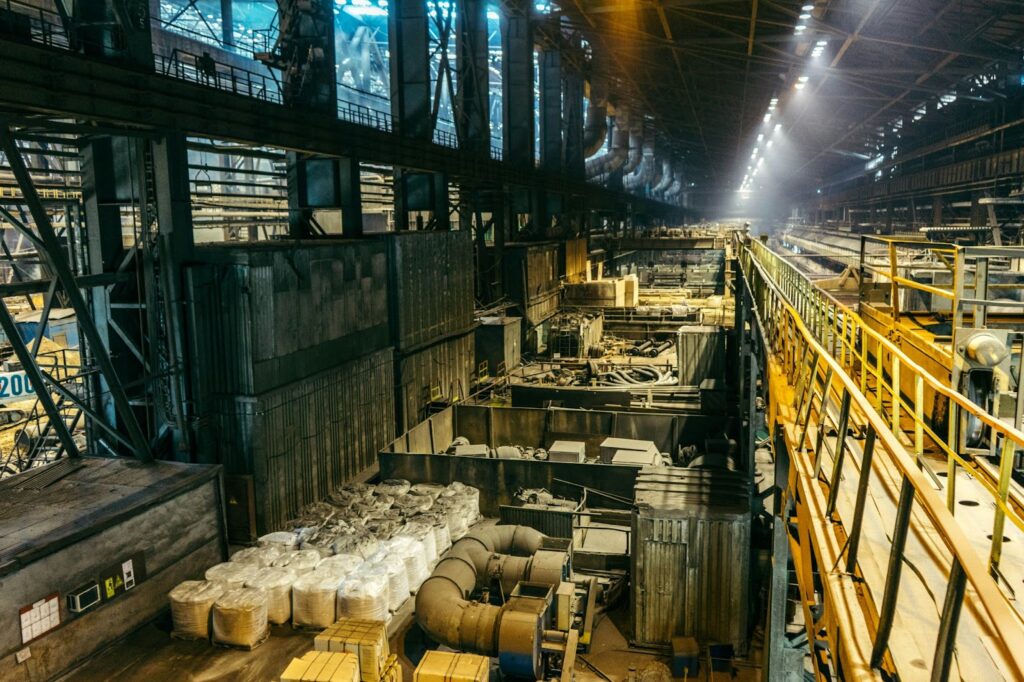
Let’s delve deeper into the importance of industrial buildings. These structures play a crucial role in ensuring the safety and well-being of workers. They are designed with meticulous attention to detail, considering factors such as fire safety, ergonomic layouts, and proper ventilation systems. By providing a secure and comfortable working environment, the different types of industrial buildings contribute to the overall productivity and satisfaction of employees.
Moreover, industrial buildings are not just essential for the smooth functioning of industries; they also have a significant impact on the economy. These structures are the backbone of manufacturing and production sectors, enabling the creation of goods and products that drive economic growth.
Industrial buildings foster innovation, allowing companies to develop new technologies and processes that enhance productivity and competitiveness.
Check out: What Is An Industrial Building?
Key Features of Industrial Buildings
The design of industrial buildings incorporates specific features that distinguish them from other types of structures. Some key features include:
- Durable construction materials to withstand heavy machinery and equipment
- Ample floor space to accommodate manufacturing processes and storage needs
- High ceilings to accommodate large industrial equipment and machinery
- Advanced ventilation systems to ensure proper air circulation and temperature control
- Robust electrical systems to support heavy power requirements
- Efficient lighting systems to enhance visibility and productivity
Let’s explore these features in more detail.
The use of durable construction materials, such as reinforced concrete and steel, ensures that industrial buildings can withstand the immense weight and vibrations generated by heavy machinery and equipment.
This durability not only ensures the safety of workers but also minimizes the risk of structural damage, leading to cost savings in the long run.
Ample floor space is another crucial feature of industrial buildings. It allows for the smooth flow of manufacturing processes and provides sufficient room for storage and inventory management. With well-organized floor plans, companies can optimize their operations and minimize unnecessary movement, resulting in increased efficiency and productivity.
Check out: Durable Flooring Ideas For Metal Building Interiors
High ceilings are a distinctive characteristic of industrial buildings. They are different types that are designed to accommodate large industrial equipment and machinery, such as cranes and conveyor systems.
The vertical space allows for efficient material handling and enables companies to maximize their production capabilities. Additionally, high ceilings also provide flexibility for future expansions and modifications, ensuring that industrial buildings can adapt to changing needs.
Advanced ventilation systems are crucial for maintaining a healthy and comfortable working environment within industrial buildings. These systems ensure proper air circulation, remove pollutants, and regulate temperature and humidity levels.
By providing fresh and clean air, industrial buildings promote the well-being of employees and prevent the buildup of harmful substances, enhancing overall safety and productivity.
Robust electrical systems are essential to meet the heavy power requirements of industrial operations. Industrial buildings are equipped with reliable types of electrical infrastructure, including high-capacity transformers, distribution panels, and backup power systems.
These systems ensure a stable and uninterrupted power supply, preventing costly disruptions and downtime.
Efficient lighting systems are another key feature of industrial buildings. Adequate lighting is crucial for maintaining a safe and productive working environment.
Industrial buildings incorporate a combination of natural and artificial lighting sources to ensure optimal visibility.
Well-lit workspaces reduce the risk of accidents and errors, while also improving the overall mood and well-being of employees.
Classification of Industrial Buildings
Industrial buildings can be classified into various categories based on their specific purpose and primary function. Let’s explore some of the common classifications:
Factories and Manufacturing Units
Factories and manufacturing units are industrial buildings where raw materials are transformed into finished products through a series of production processes. These buildings often house assembly lines, machinery, and specialized equipment to ensure smooth manufacturing operations.
In addition to the machinery and equipment, factories and manufacturing units also incorporate designated areas for quality control inspections, storage of raw materials and finished products, as well as administrative offices for managing production schedules and coordinating logistics.
Warehouses and Distribution Centers
Warehouses and distribution centers primarily serve as storage facilities for goods and products. They play a critical role in the supply chain by providing safe and organized spaces for inventory management, order fulfillment, and distribution logistics.
Within warehouses and distribution centers, there are specialized zones such as temperature-controlled storage areas for perishable goods, automated storage and retrieval systems for efficient inventory management, and loading docks equipped with advanced technology for seamless transportation of goods.
Check out: Starting A Warehouse Business: Key Considerations
Power Plants and Energy Facilities
The type of industrial buildings dedicated to power generation and energy production are classified as power plants and energy facilities. These structures house turbines, generators, boilers, and other equipment necessary for the generation and distribution of electricity and other forms of energy.
Moreover, power plants and energy facilities adhere to strict safety regulations and environmental standards to ensure the efficient and sustainable production of electricity.
They often have on-site laboratories for testing fuel quality, emission control systems to minimize environmental impact, and monitoring stations to oversee energy output and consumption in real-time.
Design and Construction of Industrial Buildings
Designing and constructing industrial buildings requires careful planning to ensure functional efficiency, structural integrity, and safety. Let’s explore some key considerations in this process:
Architectural Considerations for Industrial Buildings
Architects and designers of industrial buildings must consider factors such as optimal layout for workflow, efficient space utilization, and adherence to building codes and regulations.
They also need to prioritize the safety and well-being of the occupants by incorporating features like emergency exits, fire suppression systems, and adequate lighting.
Moreover, architectural considerations extend to the aesthetic appeal of industrial buildings. While functionality is paramount, modern industrial architecture often incorporates elements of contemporary design to create visually appealing structures.
Utilizing materials such as glass, metal panels, and innovative facade treatments can enhance the overall look of the building, making it a standout feature in the industrial landscape.
Structural Elements in Industrial Building Design
Industrial buildings require robust structural elements to withstand heavy loads, machinery vibrations, and environmental stresses.
Elements like reinforced concrete columns, steel frames, sturdy flooring systems, and powerful foundations are critical for the overall stability and longevity of the building.
In addition to the primary structural elements, industrial building design also involves considerations for specialized features such as crane systems, mezzanine floors, and loading docks.
These elements are integrated into the overall structural design to support specific industrial processes and operations within the building.
By customizing the structural elements to accommodate these features, designers can optimize the functionality and efficiency of the industrial space, creating a tailored environment that meets the unique needs of the facility.
Maintenance and Safety in Industrial Buildings
Maintaining a high level of safety and implementing regular maintenance practices are essential for the smooth and safe operation of industrial buildings. Let’s explore these areas in more detail:
Industrial buildings are complex structures that house a variety of equipment and systems crucial for daily operations. To ensure the longevity and efficiency of these buildings, routine inspections, repairs, and maintenance practices are paramount.
Regular checks on electrical systems, machinery, ventilation, and fire safety equipment not only help prevent unexpected breakdowns but also contribute to the overall productivity and safety of the workplace.
Routine Maintenance Practices
Industrial buildings require routine inspections, repairs, and maintenance to ensure the optimal functionality of equipment, systems, and structural elements.
Regular checks on electrical systems, machinery, ventilation, and fire safety equipment are crucial to avoid breakdowns, accidents, or operational disruptions.
Moreover, proactive maintenance practices can help in identifying potential issues before they escalate into major problems.
By conducting regular assessments and addressing maintenance needs promptly, industrial building owners can save on costly repairs and downtime, ultimately leading to a more efficient and sustainable operation.
Safety Regulations and Compliance
Industrial building types must adhere to strict safety regulations and compliance measures to protect workers and the surrounding environment.
Compliance with guidelines related to fire safety, occupational health, hazardous material handling, and emergency response protocols is crucial for reducing risks and ensuring a safe working environment.
Pro tip:
Rules and regulations are essential for a safe worksite, but a strong safety culture enables every worker to act as a safety leader. When everyone feels accountable for their own well-being and that of their colleagues, accidents are less likely to happen.
Ensuring safety in industrial buildings goes beyond just meeting regulatory requirements; it involves creating a culture of safety consciousness among all employees.
Training programs, safety drills, and regular safety audits play a vital role in instilling a sense of responsibility and awareness among workers, fostering a secure and healthy work environment for all.
Check out: Care And Maintenance Tips For Your Steel Building
Future Trends in Industrial Building Design
The evolution of industrial building design is continuously shaped by technological advancements and sustainability initiatives. Let’s explore two notable trends:
Sustainable and Green Industrial Buildings
In response to environmental concerns and resource efficiency, industrial buildings are increasingly incorporating sustainable design practices. This includes the use of renewable energy sources, energy-efficient lighting, rainwater harvesting systems, and waste recycling initiatives to minimize their environmental impact.
One type of sustainable design in industrial buildings is the integration of solar panels on the roof. These panels harness the power of the sun to generate electricity, reducing reliance on traditional energy sources and decreasing carbon emissions.
Additionally, green roofs are becoming popular in industrial building design. These roofs are covered with vegetation, providing insulation, reducing stormwater runoff, and improving air quality.
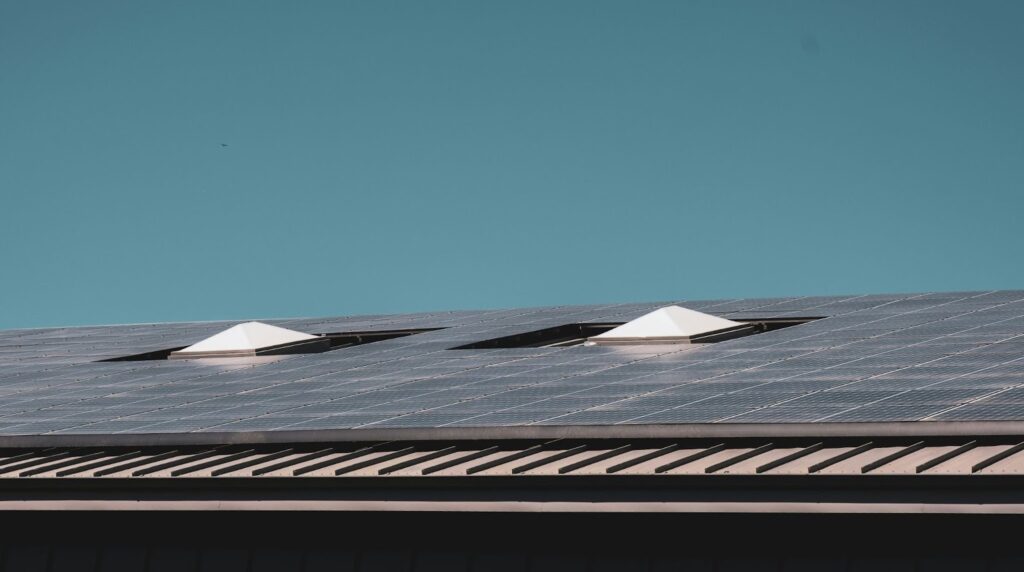
Technological Innovations in Industrial Building Design
The integration of advanced technologies, such as the Internet of Things (IoT), automation, robotics, and artificial intelligence, is transforming industrial building design. These innovations streamline processes, optimize energy consumption, and improve operational efficiency, leading to higher productivity and cost savings.
One exciting technological innovation in industrial building design is the implementation of smart sensors. These sensors can monitor various aspects of the building, such as temperature, humidity, and occupancy. This allows real-time adjustments to optimize energy usage.
Additionally, the use of robotics and automation in industrial buildings is revolutionizing manufacturing processes. Robots can perform repetitive tasks with precision and speed, increasing productivity and reducing the risk of human error.
Conclusion
As we look to the future, the possibilities for industrial building types and design are vast. From sustainable practices to technological advancements, the goal is to create buildings that are not only functional but also environmentally friendly and efficient.
By embracing these trends, industrial buildings can contribute to a greener and more sustainable future.
SteelCo has over 23 years of experience dropshipping pre-engineered metal building (PEMB) materials nationwide and offers commercial construction services in Georgia.
Learn more about our expertise in PEMB industrial buildings and how we can serve you on your next project.
———————————-
Frequently Asked Questions
How long does it take to construct an industrial building?
The construction timeline for an industrial steel building is influenced by factors, including size, complexity, and project location. Steel buildings can typically be constructed more quickly than traditional buildings. Some projects can be completed in as little as 3-4 months from discovery/quote to construction.
What is the cost of building an industrial facility with steel?
The cost depends on several factors, such as its size, design complexity, and customization. A basic building is approximately $17 to $20 per square foot for PEMB materials, $6 to $10 for building erection. It cost around $110 to $150 per sq ft for the full construction cost (including materials, interior build-out, and construction). This cost is for “small” projects under 100,000 square feet. For 200,000 SF projects and up, cost per square foot can start to reduce significantly.

